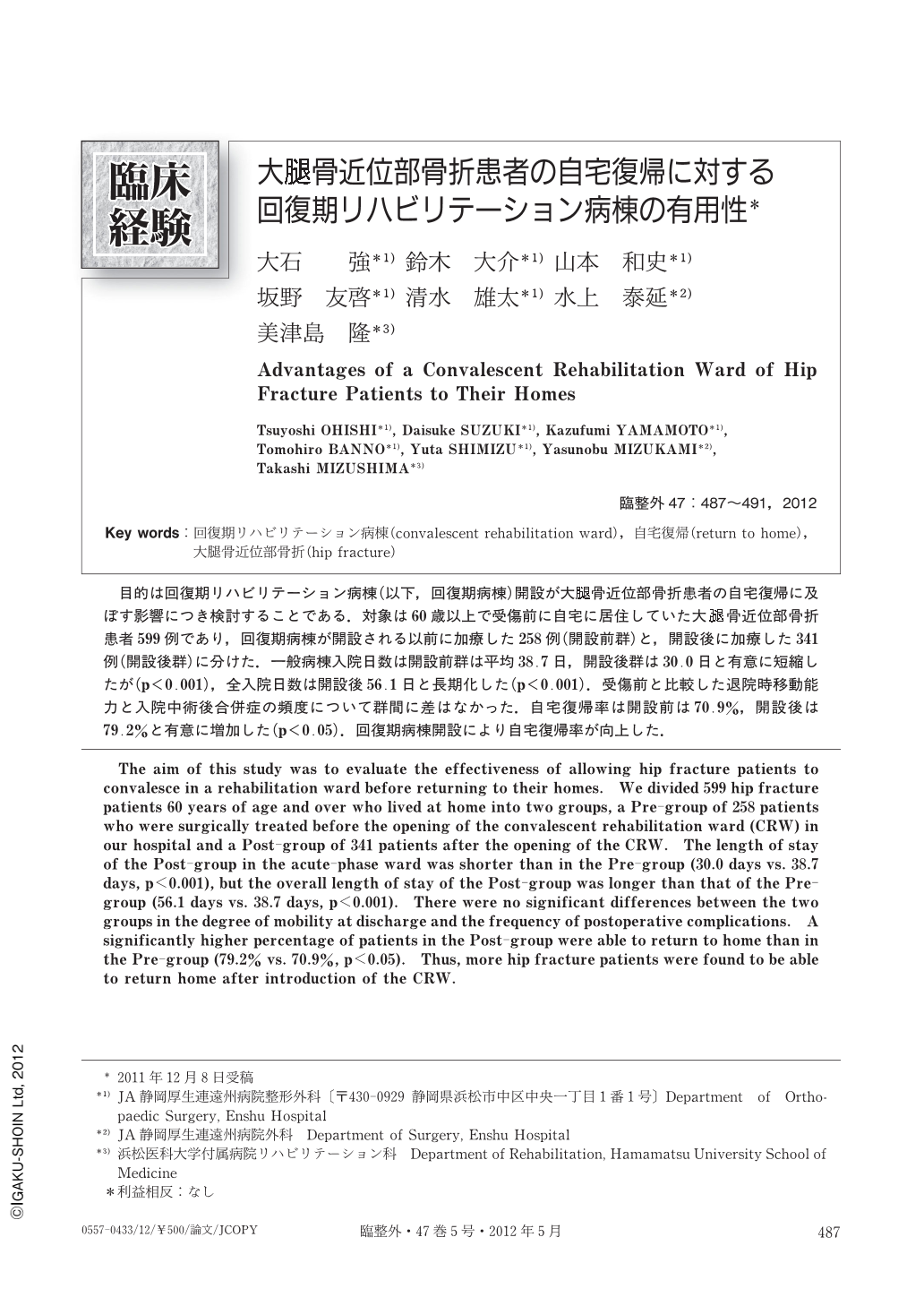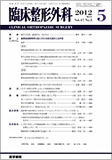Japanese
English
- 有料閲覧
- Abstract 文献概要
- 1ページ目 Look Inside
- 参考文献 Reference
目的は回復期リハビリテーション病棟(以下,回復期病棟)開設が大腿骨近位部骨折患者の自宅復帰に及ぼす影響につき検討することである.対象は60歳以上で受傷前に自宅に居住していた大腿骨近位部骨折患者599例であり,回復期病棟が開設される以前に加療した258例(開設前群)と,開設後に加療した341例(開設後群)に分けた.一般病棟入院日数は開設前群は平均38.7日,開設後群は30.0日と有意に短縮したが(p<0.001),全入院日数は開設後56.1日と長期化した(p<0.001).受傷前と比較した退院時移動能力と入院中術後合併症の頻度について群間に差はなかった.自宅復帰率は開設前は70.9%,開設後は79.2%と有意に増加した(p<0.05).回復期病棟開設により自宅復帰率が向上した.
The aim of this study was to evaluate the effectiveness of allowing hip fracture patients to convalesce in a rehabilitation ward before returning to their homes. We divided 599 hip fracture patients 60 years of age and over who lived at home into two groups, a Pre-group of 258 patients who were surgically treated before the opening of the convalescent rehabilitation ward (CRW) in our hospital and a Post-group of 341 patients after the opening of the CRW. The length of stay of the Post-group in the acute-phase ward was shorter than in the Pre-group (30.0 days vs. 38.7 days, p<0.001), but the overall length of stay of the Post-group was longer than that of the Pre-group (56.1 days vs. 38.7 days, p<0.001). There were no significant differences between the two groups in the degree of mobility at discharge and the frequency of postoperative complications. A significantly higher percentage of patients in the Post-group were able to return to home than in the Pre-group (79.2% vs. 70.9%, p<0.05). Thus, more hip fracture patients were found to be able to return home after introduction of the CRW.

Copyright © 2012, Igaku-Shoin Ltd. All rights reserved.


